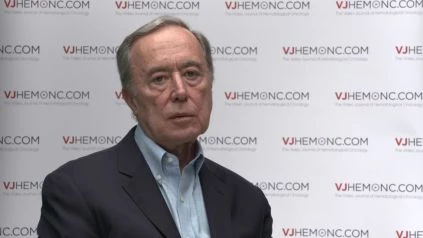Nicholas Chiorazzi, MD from The Feinstein Institute for Medical Research, Manhasset, NY discusses his research on the life cycle of chronic lymphocytic leukemia (CLL) cells at the 2016 International Workshop of the German CLL Study Group (GCLLSG) held in Cologne, Germany. Prof. Chiorazzi explains that they are interested in identifiyng intraclonal populations with an focus on functional differences, which have to do with time since last replication. The population are divided based on surface membrane expression of markers that indicate time since last replication. He explains that what they find is that CLL cells go through a life cycle. Further, if the CLL cell can get to a solid tissue niche, they survive and maybe even start that cycle again. Depending on the age of the cell, its biology is different. Therefore, if you want to eliminate all cells of a clone, it is important to identify cells at these different ages. Young cells are more susceptible to certain kinds of treatments and old cells need to get back to tissue niches for survival signals as otherwise, they die. If you inhibit the cells’ ability to go to these niches, they will die in the circulation. Prof. Chiorazzi explains that one of the effects of ibrutinib and idelalisib is to prevent this trafficking, which means they are good towards the end of the cells life cycle. They are also good at the beginning as the block the division and the life of the cell after cell divison. The focus now is on the cells in the middle, which have different vulnerabilities. He believes that the ideal combination of drugs would be one that inhibits all three stages in the life cycle.
The importance of the life cycle of CLL cells and how it can inform treatment

